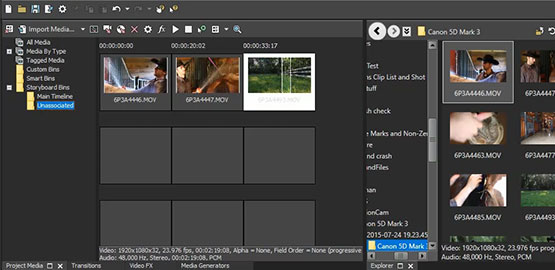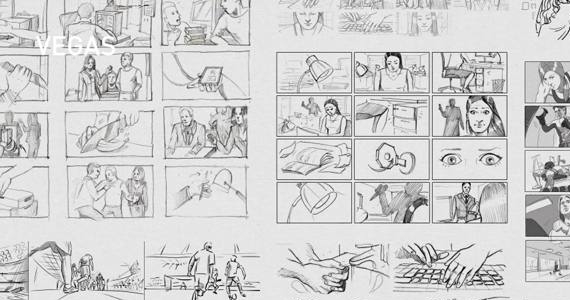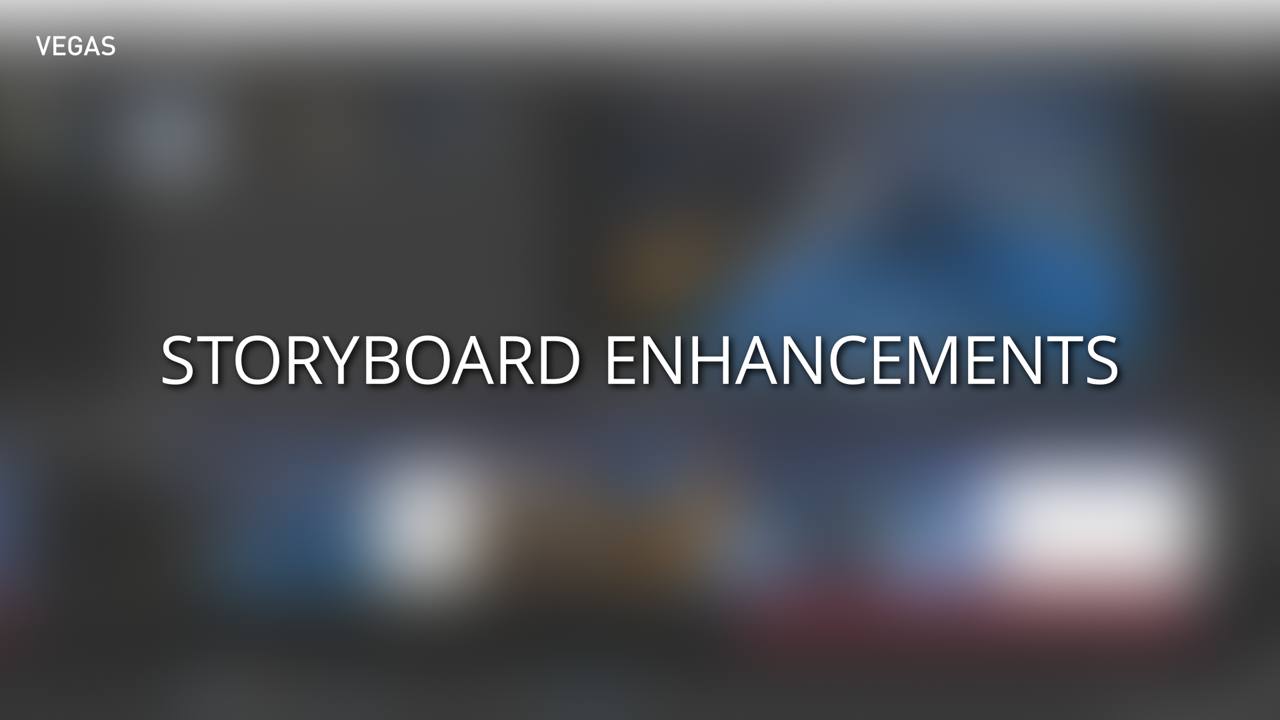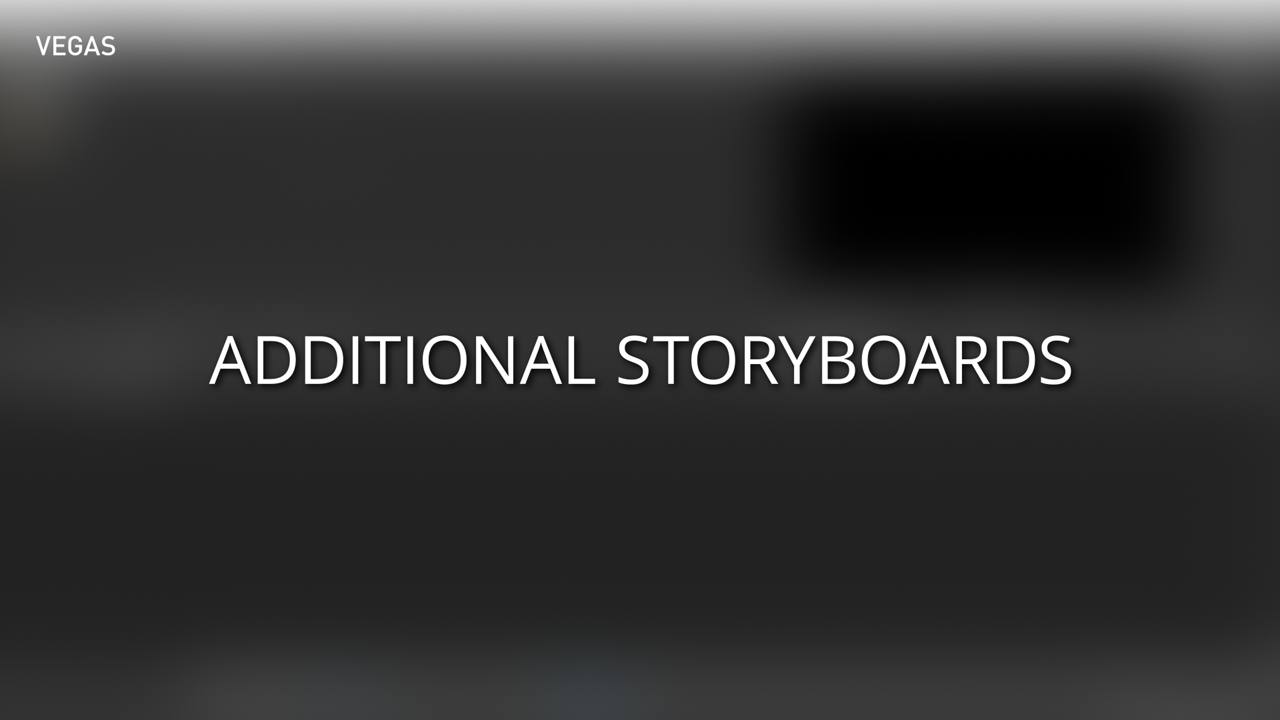What you’ll learn:
Storyboards - make it easy to build your story
Any effective video tells a story. Whether it’s a movie, or a documentary, an informational video, a TV commercial, what have you, to engage the audience, it tells a story. Storyboards in VEGAS Pro give you fast, easy, and extremely flexible tools to craft your story, experiment with alternate sequences or ways of telling the story, and keep your storytelling organized and efficient. Read on to learn how!

Telling a story is about giving the audience the information you want them to know in a relatable, interesting way which makes them want to stay around to find out what happens. At its most basic, a story consists of a beginning, middle, and end. The beginning sets up the story – defines the problem and who and what are involved. The middle shows characters going through the process of solving the problem. Finally, in the ending, the problem is finally solved! That basic structure is true of any story, just as it has been as long as stories have been told.

In a movie, the beginning, usually called the first act, introduces you to characters, where they live, what they want, and the obstacles they face. It sets up a clear path that the rest of the movie will follow. Think of it as a roadmap, telling you where things are going. Also think of it as setting up a question, a question which will be answered in the end.

During the middle, or the second act, the characters set out to do what they want or need to do, and we the audience, follow them. We also see what they’re up against, and who/what is trying to keep them from accomplishing their goal and answering the question. They run up against obstacles and figure their way around them, leading up to the ending.

In the ending, or the third act, the characters finally confront the main problem – usually a villain or a challenging situation – and solve it once and for all. They defeat the bad guy. They climb the mountain. They get everyone out of the path of the erupting volcano. They live happily ever after.
Now, it’s easy to see how a movie tells a story, but take the example of a TV commercial – what story does it tell? Well, it tells you the story of how a product can make your life better. It starts out by telling you that you need something – to overcome a problem, or to make your life happier. Then it shows you the product and how to use it to accomplish just that. Then it concludes by saying your problem is solved, and the product is what did it.
A documentary follows a similar path: this real person or group want something. This is everything in their way. This is how they tried to overcome it. In the end, this is how they did overcome it.
Watch below our video example about the Anatomy of a Story.

When you’re making a video, your story should have been figured out in your script. But even with a script in hand, when it comes down to editing the video and telling that story, there’s still a lot of room for creativity and telling the story the script calls for with creative editing.
Editors make a lot of choices which help tell the story. They choose between different camera angles of the same shot, deciding if wider or tighter shots work better, if the shot from above or below conveys the best feeling. They choose how to cut between characters, places, and events. They choose ways to direct the audience’s attention to – or away – from certain elements within the film. Editors make countless decisions which affect how the story is told, all the way through the editing process. In many ways, editing is storytelling.
So obviously, many choices means translates to a lot of room for creativity and experimentation. The best editing software facilitates an editor’s creativity, allows them room for that experimentation, and lets the editor work freely the best way they know how.

In the production world, storyboards are pre-production aids, to help everyone visualize the final film or video so they all know exactly what needs to be shot during production, and a general idea of how it will all fit together in the end. A storyboard sequence of a scene depicts drawings or images of what the shots will look like, in the order they will be used.
The storyboards in VEGAS Pro let you do the same sort of thing, only with video clips. You can lay out shots, images, and other media in a tentative sequence just to see how well it plays. And like pre-production storyboards, you can rearrange them easily and lay them out differently if you think of new and better ways to construct the scene. And, you can keep multiple storyboards of the same scene or sequence for easy comparison between alternate sequences.

So, like we said, the beginning of the story is about introducing characters, where they live, what they want, and what problems will be in the way of it. There are many, many creative ways to do all of it. Sometimes the order in which you introduce characters sets up moods and raises questions in ways very different from if you had introduced in a different order. With storyboards, you can rearrange shots at will to experiment with different combinations.
The genius of storyboards is that you’re working with clips almost like you’re laying them out on your desk, with the freedom to move them around easily. You’re not working on the video timeline; you’re working with the clips themselves in a much freer space. You can even preview your sequence as a full rough cut right from the Project Media window, without ever going to the timeline.
One of the great advantages of VEGAS Pro storyboards is that what you do in your main storyboard automatically appears on the timeline and updates while you work, so when you ARE ready to edit on the timeline, your work is already there.
And you can use additional storyboards which are independent from the timeline, and you decide when to bring them to the timeline. A simple click and drag, and your whole storyboard sequence drops on the timeline for final editing.
Storyboards give you the flexibility to work the way you want.
















What's the difference between VEGAS Pro and VEGAS Pro Suite?





